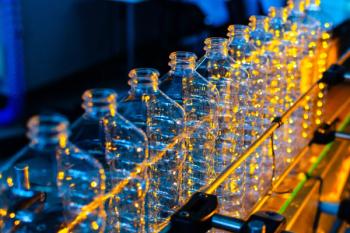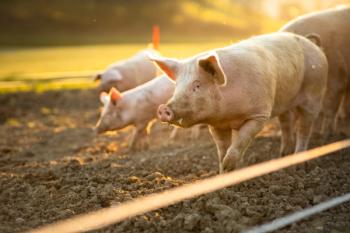
How THz and THz-Raman Spectroscopy Are Used in Drug Safety, Farming, and Mining
A new review by researchers from IIT Delhi and the University of Queensland highlights how Terahertz (THz) and low-wavenumber Raman (THz-Raman) spectroscopy are advancing quality control and efficiency in pharmaceuticals, agriculture, and mineral industries. These powerful non-invasive tools enable detailed multi-parameter sensing, offering deeper insight at the molecular level.
Cutting-Edge Spectroscopy Reveals Details on Industry Challenges
In a groundbreaking review published in Optics & Laser Technology, researchers from the Indian Institute of Technology (IIT) Delhi and the University of Queensland (Brisbane, Australia) have showcased the expansive potential of Terahertz (THz) spectroscopy and low-wavenumber Raman spectroscopy across key industrial sectors. The authors Khushboo Singh, Naini Bajaj, Mayuri Kashyap, Aparajita Bandyopadhyay, and Amartya Sengupta explore how these non-destructive optical techniques are reshaping precision monitoring and analysis in pharmaceuticals, agriculture, and mineral extraction (1). THz spectroscopy is commonly used for mineralogy in modern times (1–3).
New Tools for Pharmaceutical Quality Control
The pharmaceutical industry has particularly benefited from THz spectroscopy's ability to detect polymorphic forms, structural changes, and variations in molecular arrangements, all without altering or damaging the sample. According to the review, THz spectroscopy’s unique sensitivity to inter- and intra-molecular vibrations enables it to differentiate between isomers, enantiomers, and conformers, offering critical insights into drug formulation stability and consistency (1).
Meanwhile, low-wavenumber Raman spectroscopy fills a crucial analytical gap left by traditional Raman methods. While conventional Raman spectroscopy operates in the 200–4000 cm⁻¹ range, low-wavenumber or THz-Raman spectroscopy probes as low as 5 cm⁻¹. This capability allows for detailed analysis of structural transitions and glassy states, vital for understanding pharmaceutical compounds' physical properties (1).
Farming Smarter with Spectroscopy
In agriculture, the review highlights how these technologies help farmers and scientists optimize crop and soil management. THz and THz-Raman spectroscopy offer detailed analyses of water content, nutrient levels, and biological composition, paving the way for resource-efficient farming and sustainable practices. These spectroscopic techniques can evaluate plant stress, detect disease early, and monitor soil quality, helping ensure higher yields and healthier crops.
Recent developments in cost-effective sensors — from fiber optics for detecting aflatoxin B1 in crops to plasmonic biosensors for hormone levels in livestock — underscore the versatility and affordability of spectroscopic tools in the field. As precision agriculture advances, the ability to gather detailed molecular data non-destructively is becoming indispensable (1).
Unveiling Earth’s Treasures More Accurately
The mining and mineral industries have also embraced THz and THz-Raman spectroscopy for their precision in identifying mineral compositions. These techniques can probe both crystalline and amorphous materials, supporting more accurate exploration and processing. The paper notes that the ability to assess complex refractive indices and permittivity through THz spectroscopy provides clear advantages in mineral analysis, while THz-Raman's compatibility with solids, liquids, and gases enhances its utility in diverse field conditions (1).
Complementary Strengths, Deeper Insights
Despite covering similar spectral regions, THz and THz-Raman spectroscopy yield fundamentally different types of data. THz techniques measure electric field responses, offering direct access to a substance’s complex refractive index. In contrast, Raman-based methods count scattered photons and excel at mapping individual components in mixtures. Their complementary nature allows for comprehensive multi-parameter analysis, providing a layered understanding of materials (1).
The authors emphasize that combining these techniques offers a fuller picture of sample behavior, essential for industries where micro-level details can make or break performance, safety, or sustainability.
Tracking the Rise of THz Spectroscopy
Supporting the growing importance of these tools, the paper includes data from the Web of Science showing a fivefold increase in THz-related publications from 2004 to 2022. The trend demonstrates escalating global interest and investment in this field, particularly as industries seek more refined, non-invasive quality control methods (1).
A Roadmap for Future Innovation
While previous studies have explored the individual strengths of THz and Raman spectroscopy, this comprehensive review uniquely integrates their combined potential. The authors call attention to gaps in the literature and urge further collaborative research to fully unlock the capabilities of multi-parameter sensing. With continued advances in sensor design and data interpretation, these spectroscopic tools are poised to lead the next wave of innovation across sectors (1).
Institutions Involved
- Department of Physics, Indian Institute of Technology, New Delhi, India
- DRDO Industry Academia - Center of Excellence, Indian Institute of Technology, New Delhi, India
- School of Electrical Engineering and Computer Science, The University of Queensland, Brisbane, Australia
This compelling review not only maps out the current landscape of THz and THz-Raman spectroscopy but also lays the foundation for how these tools can drive precision, safety, and sustainability in the years ahead (1).
References
(1) Singh, K.; Bajaj, N.; Kashyap, M.; Bandyopadhyay, A.; Sengupta, A. Applications of Multi-Parameter Sensing in Pharmaceutical, Agriculture, and Mineral Industries Using THz Spectroscopy and Low-Wavenumber Raman Spectroscopy. Opt. Laser Technol. 2024, 177, 111020. DOI:
(2) Huang, H.; Liu, Z.; Ruggiero, M. T.; Zheng, Z.; Qiu, K.; Li, S.; Zhang, Z.; Zhang, Z. Terahertz Geoscience: THz Time-Domain Spectroscopy for Mineral Materials. Cryst. Growth Des. 2025. DOI:
(3) Huang, H.; Li, X.; Zheng, Z.; Fan, H.; Liu, C.; Yuan, E.; Gu, J.; Ma, Y.; Xu, Q.; Panezai, S.; Li, S. Holographic Characterization of Typical Silicate Minerals by Terahertz Time-Domain Spectroscopy. Appl. Clay Sci. 2025, 267, 107720. DOI:
Newsletter
Get essential updates on the latest spectroscopy technologies, regulatory standards, and best practices—subscribe today to Spectroscopy.




